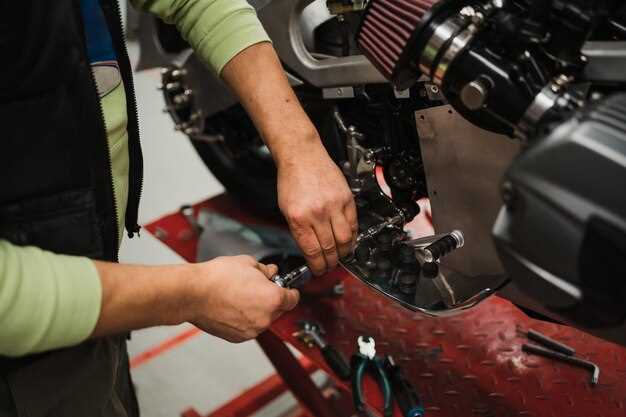

The motorcycle engine is the heart of any bike, and like any vital component, it can experience a variety of issues that may hinder performance or even render the vehicle inoperable. Understanding these common problems is essential for every rider, whether you are a seasoned motorcyclist or a newcomer to the motorcycle world. Being aware of potential engine issues can not only save you time and money but also enhance your riding experience.
From unexpected stalling and starting difficulties to unusual noises and overheating, engines can exhibit a range of symptoms that signal a need for attention. Each of these issues often has specific causes, which can vary significantly depending on factors such as the bike’s make, model, and maintenance history. This article aims to delve into some of the most prevalent motorcycle engine issues, offering practical solutions and preventative measures to keep your motorcycle running smoothly.
Regular maintenance and prompt attention to warning signs are crucial in preventing minor issues from escalating into major repairs. With the information provided in this article, riders can equip themselves with the knowledge necessary to tackle engine problems effectively. Whether you choose to address issues yourself or seek professional assistance, being informed is the first step towards ensuring the longevity and reliability of your motorcycle.
Identifying and Fixing Overheating Problems in Motorcycle Engines

Overheating is a common issue that can lead to severe damage in motorcycle engines if not addressed promptly. Identifying the signs of overheating is crucial. Look for symptoms such as increased engine temperature on the gauge, steam or smoke from the engine area, and unusual changes in performance.
Start by checking the coolant level if your motorcycle is liquid-cooled. A low coolant level could lead to overheating. Inspect the cooling system for any leaks or blockages in hoses, radiators, and water pumps. If the coolant is contaminated or discolored, it should be replaced. Regular maintenance of the coolant system is essential for proper cooling performance.
For air-cooled engines, ensure that the engine fins and oil cooler are clean. Dirt and debris can obstruct airflow, leading to increased temperatures. Clean any accumulated grime with a soft brush or compressed air to improve heat dissipation.
Another common cause of overheating is a malfunctioning thermostat. A faulty thermostat may not open or close properly, disrupting coolant flow. Test the thermostat by removing it and checking its operation in hot water. If it fails to open at the specified temperature, replace it.
Examine the oil level and quality as well. Engine oil lubricates and cools the engine; low or degraded oil can result in increased friction and heat. Change the oil regularly and use the recommended grade for your motorcycle to ensure optimal performance.
A clogged air filter can also restrict airflow to the engine, leading to overheating. Inspect and replace the air filter as necessary. Additionally, ensure that the fuel system is working efficiently to prevent running too lean, which can cause excessive heat.
Finally, pay attention to riding habits. Long periods of idling, aggressive acceleration, and high RPMs can contribute to overheating. Adjust riding style to allow for adequate cooling and avoid prolonged stops in hot weather.
By routinely checking these components and maintaining the motorcycle, overheating problems can be identified and resolved before they escalate into more serious issues.
Troubleshooting Fuel Delivery Issues for Optimal Performance
Fuel delivery problems in motorcycles can significantly impact performance, leading to issues such as poor acceleration, stalling, or difficulty starting. Identifying and resolving these issues is essential for maintaining optimal engine performance. Here are common causes and solutions for fuel delivery problems.
1. Clogged Fuel Filter: A clogged fuel filter restricts the flow of fuel to the engine. This can result in reduced power and fuel efficiency. Regularly check and replace the fuel filter according to the manufacturer’s recommendations. If you experience a sudden loss of power, replacing a clogged filter may restore performance.
2. Contaminated Fuel: Fuel contamination can occur from water or dirt entering the fuel system. This leads to corrosion and engine misfiring. If you suspect contaminated fuel, drain the fuel tank and lines, then refill with fresh, high-quality fuel. Consider using fuel additives that help clean the system during regular maintenance.
3. Failing Fuel Pump: A malfunctioning fuel pump can result in insufficient fuel delivery. Signs include sputtering at high speeds or difficulty starting the engine. To troubleshoot, check for unusual noises from the pump and ensure the electrical connections are secure. If the pump is faulty, replacement is necessary for proper fuel flow.
4. Fuel Injector Problems: Clogged or malfunctioning fuel injectors can lead to uneven fuel distribution, causing poor performance. Use a fuel injector cleaner to unclog injectors, and consider servicing them for optimal function if issues persist. Regular maintenance can prevent buildup and maintain efficiency.
5. Fuel Line Issues: Check for leaks, kinks, or damaged fuel lines that can disrupt fuel flow. Visually inspect for signs of wear or cracks. Replace damaged lines to restore proper fuel delivery. Ensure all connections are tight to prevent leaks that can cause fuel loss or ignite fires.
6. Carburetor Adjustments: For motorcycles with carburetors, incorrect tuning can affect fuel delivery. Ensure the air-fuel mixture is correctly adjusted to match engine demands. Regular maintenance and cleaning of the carburetor can prevent issues related to fuel delivery and improve responsiveness.
By systematically investigating these areas, motorcycle owners can effectively troubleshoot and resolve fuel delivery issues, ensuring optimal engine performance and longevity.
Addressing Unusual Noises: Diagnosing Engine Knock and Rattle

Unusual noises from a motorcycle engine can be alarming for riders. Two common sounds that signal potential issues are engine knock and rattle. Diagnosing these noises promptly is crucial to prevent further damage.
Engine Knock typically resembles a metallic sound and is often associated with detonation or pre-ignition. It occurs when the air-fuel mixture ignites prematurely in the combustion chamber. Factors contributing to engine knock include:
- Poor Fuel Quality: Using lower-octane fuel than recommended can lead to knocking. Always adhere to the manufacturer’s fuel specifications.
- Ignition Timing Issues: Incorrect ignition timing can cause premature combustion. A faulty ignition timing can be adjusted using a timing light.
- Carbon Buildup: Excess carbon deposits on the piston or cylinder head can increase compression ratios, leading to knocking.
To resolve engine knock, consider the following solutions:
- Switch to higher-octane fuel to reduce the likelihood of pinging.
- Check and adjust the ignition timing as per the manufacturer’s guidelines.
- Perform a decarbonization process to clean deposits from the engine.
Engine Rattle presents a different scenario, often producing a more rhythmic clattering sound. It may signify loose or worn components. Common sources include:
- Loose Chain or Belt: A loose drive chain or timing belt can create rattling noises. Proper tension adjustment is essential.
- Worn Bearings: Engine bearings can wear over time, leading to increased tolerances and rattling sounds. Inspection and replacement may be necessary.
- Exhaust System Issues: Loose or damaged exhaust parts can produce rattling noises. Ensure all exhaust components are secured and in good condition.
To address engine rattle, implement these strategies:
- Inspect and tighten the drive chain or belt according to the specifications.
- Examine engine bearings and replace any that show signs of wear.
- Check the exhaust system for loose brackets or connections, and repair as needed.
In both cases, regular maintenance and timely interventions are key to enhancing engine performance and longevity. If unusual noises persist after conducting these checks, consulting a professional mechanic is advisable for a comprehensive diagnosis.






